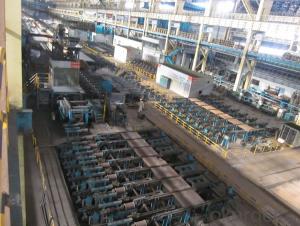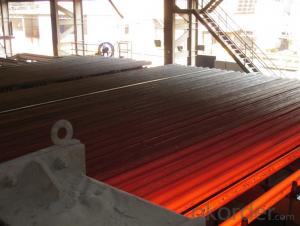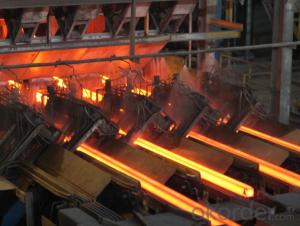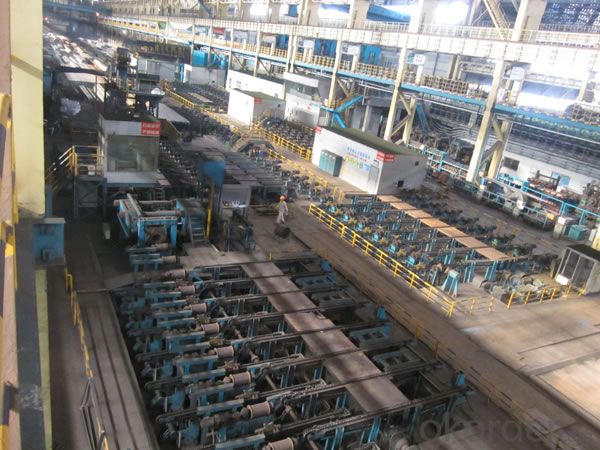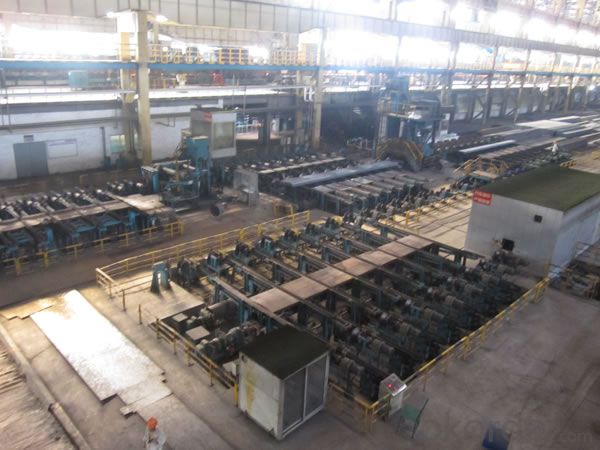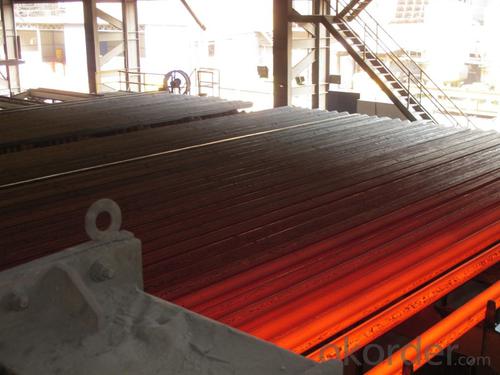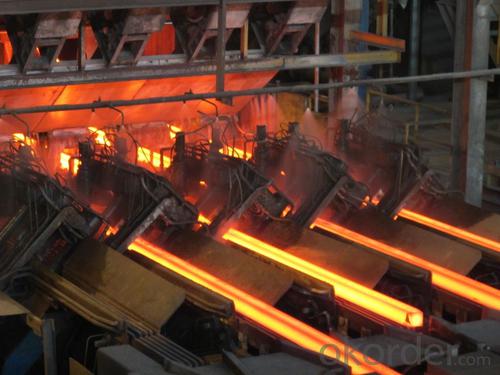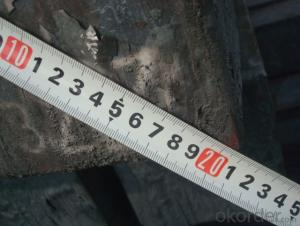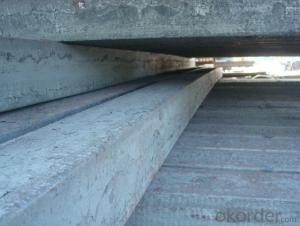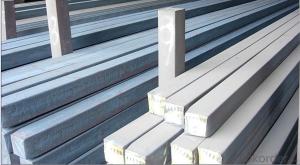Square Steel Billet Q235 Grade Prime Quality 10#
- Loading Port:
- Tianjin
- Payment Terms:
- TT OR LC
- Min Order Qty:
- 2000 m.t
- Supply Capability:
- 50000 m.t/month
OKorder Service Pledge
OKorder Financial Service
You Might Also Like
Description of Square Steel Billet Q235 Grade Prime Quality 10#
M. S. Billets are used for rolling of TMT Re-Bars of Fe415 and Fe500 Grade and various other structural steel products.
CRS Billets are used for rolling of CRS TMT Re-Bars.
Special Alloy Billets are used for rolling of any special grade TMT Re-Bars like Earthquake resistant TMT Re-Bars and for special grade structural steel products.
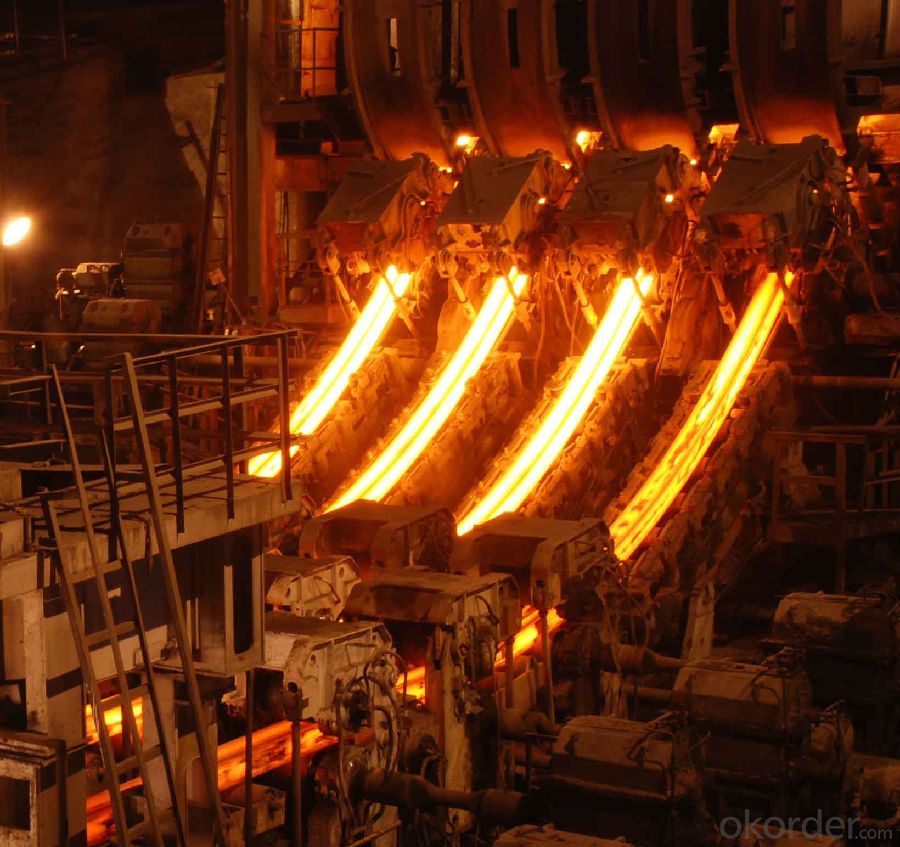
Main Feature Square Steel Billet Q235 Grade Prime Quality 10#
Raw elements(C,Fe,Ni,Mn,Cr,Cu.)---Smelted ingots by AOD finery---hot rolled into black suface---pickling in acid liquid---cold drawn----polished by automatically machine--- cutting into pieces---checking quanlity
Applications of Square Steel Billet Q235 Grade Prime Quality 10#
Widely Used in the areas such as Stainless Steel Fasteners, Chains, Kitchen and Sanitary wares, Furniture handles, Handrails, Electroplating and Electrolyzing pendants, Foods, Electron, Petroleum, Construction and Decoration, etc. Products have a high strength after cold-working. Electronic products parts, Medical appliance, Springs, Bus Inside and Outside packaging and building, Street Lamp Posts, etc. Decoration materials and Outdoor Publicity Billboard. Used for the products which have the Anti-Stress Corrosion requirement. Electron Products, Table-wares, Bolts, Nuts, Screen Meshes, Cumbustors and so on.
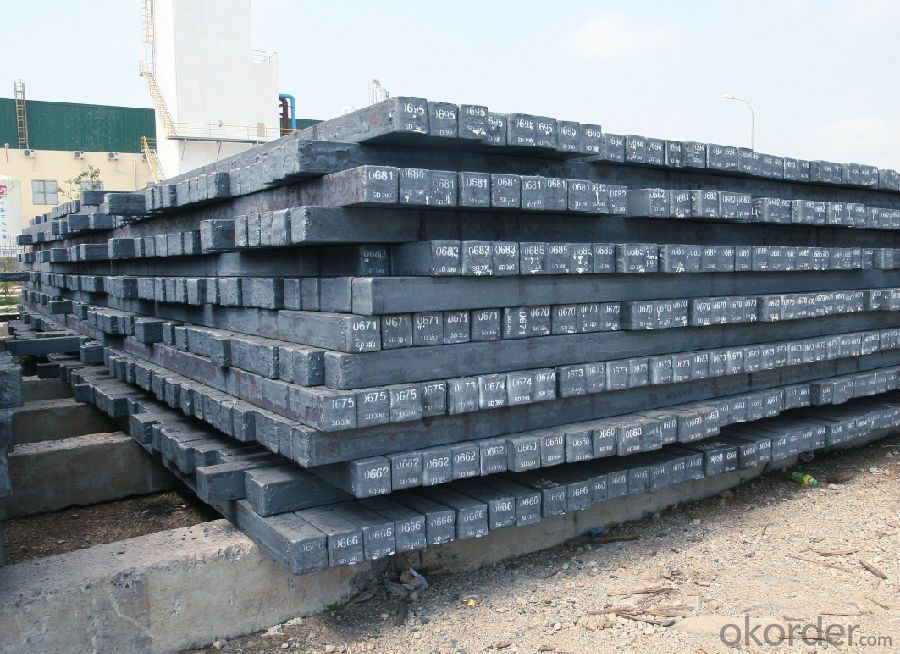
Specifications of Square Steel Billet Q235 Grade Prime Quality 10#
| Standard | C(%) | Mn(%) | S(%) | P(%) | Si(%) |
| Q195 | ≤0.12 | ≤0.50 | ≤0.040 | ≤0.035 | ≤0.30 |
| Q235 | ≤0.20 | ≤1.40 | ≤0.045 | ≤0.045 | ≤0.35 |
| Q275 | ≤0.22 | ≤1.50 | ≤0.045 | ≤0.045 | ≤0.35 |
| 20MnSi | 0.17-0.25 | 1.2-1.6 | ≤ 0.050 | ≤ 0.050 | 0.40-0.80 |
| 3SP | 0.14-0.22 | 0.40-0.85 | ≤ 0.050 | ≤ 0.040 | 0.05-0.15 |
| 5SP | 0.28-0.37 | 0.50-1.00 | ≤ 0.050 | ≤ 0.040 | 0.15-0.30 |
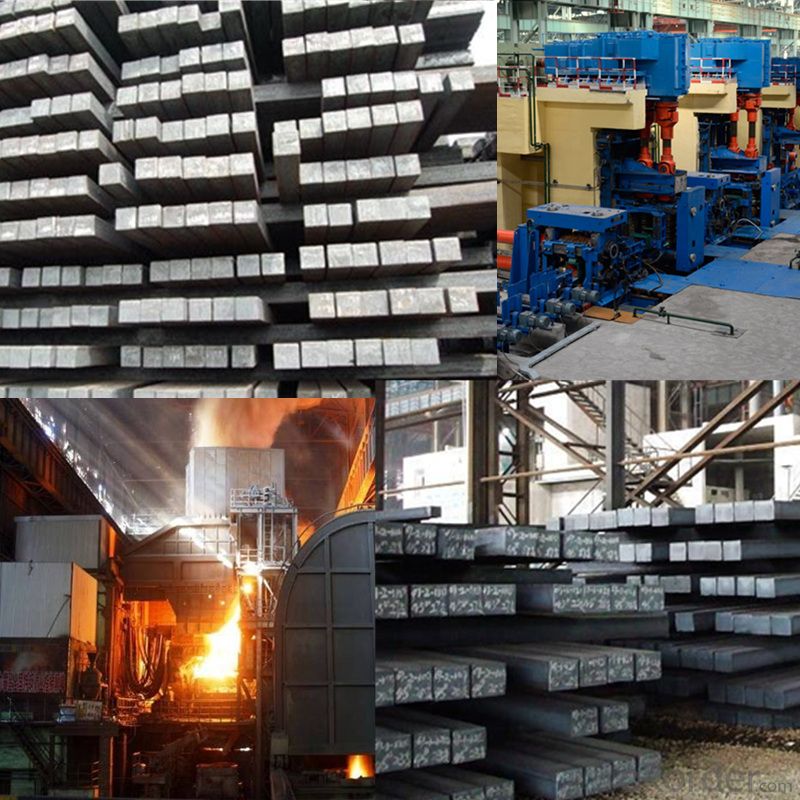
FAQ of Square Steel Billet Q235 Grade Prime Quality 10#
We have organized several common questions for our clients,may help you sincerely:
1. How Can I Visit There?
Our company is located in Tianjin City, China, near Beijing. You can fly to Tianjin Airport Directly. All our clients, from home or aboard, are warmly welcome to visit us!
2. How Can I Get Some Sample?
We are honored to offer you sample.
3. Why choose CNBM?
Our delivery time about 15-20days for standard sizes, if you have other requirements like hardness, quanity and width ,it is about 20-40days. But don't worry we also try our best for the delivery time ,because time longer and our cost is higher.
- Q: What are the different types of steel billet packaging materials?
- When selecting the suitable packaging material for steel billets, it is crucial to take into account the unique characteristics and benefits of the various options available in the market. The following are some commonly utilized packaging materials for steel billets: 1. Wooden Crates: Renowned for their durability and strength, wooden crates are a favored choice for packaging steel billets. They offer exceptional protection against external impacts and are particularly suitable for long-distance transportation. 2. Steel Strapping: Frequently employed to bundle steel billets together, steel strapping is a robust and secure packaging material. It boasts high tensile strength and resistance to breakage, ensuring that the billets remain intact during handling and transportation. 3. Plastic Wrapping: As a cost-effective and lightweight packaging option, plastic wrapping provides ample protection against moisture and dust, preventing any potential damage to the billets. Moreover, it is easily applicable and removable, rendering it a convenient choice for packaging. 4. Steel Framing: For larger and heavier steel billets, steel framing serves as a heavy-duty packaging material. It offers maximum protection and stability during transportation, effectively minimizing the risk of deformation or damage to the billets. 5. Cardboard Boxes: Smaller steel billets frequently find themselves packaged in cardboard boxes. These boxes are lightweight, easy to handle, and offer sufficient protection against minor impacts and scratches. Additionally, cardboard boxes can be customized in various sizes and shapes to accommodate different billet dimensions. 6. Stretch Film: Stretch film, a flexible packaging material, is commonly employed to wrap steel billets. It provides exceptional protection against moisture, dust, and scratches. Furthermore, stretch film imparts a certain level of stability to the billets, preventing any movement during transportation. When selecting the appropriate packaging material, it is crucial to consider the specific requirements of the steel billets, including size, weight, and transportation conditions.
- Q: What are the specifications for tool steel billets used in the automotive industry?
- Tool steel billets used in the automotive industry must meet specific criteria to ensure their suitability for various applications. These criteria are essential to guarantee the desired performance and durability of the tool steel in automotive manufacturing processes. One crucial criterion for tool steel billets used in the automotive industry is their chemical composition. The tool steel needs to have a precise composition of elements like carbon, chromium, vanadium, and molybdenum, among others. These elements contribute to the steel's hardness, wear resistance, and toughness, which are vital properties for automotive tooling. Furthermore, the tool steel billets must fall within a specific range of hardness. Hardness can be measured using scales such as Rockwell or Brinell, and the desired level of hardness depends on the intended application. Tools that require high wear resistance generally prefer higher hardness, while tools that require toughness and impact resistance may tolerate lower hardness. Additionally, the tool steel billets used in the automotive industry must display excellent dimensional stability. This means that the steel should undergo minimal dimensional changes during heat treatment and manufacturing processes, ensuring that the tools maintain their shape and accuracy over time. Another important criterion is the machinability of the tool steel. It should be easy to machine and shape into the desired tooling components without excessive tool wear or difficulty. Good machinability allows for efficient production and reduces costs associated with tooling. Moreover, the tool steel billets used in the automotive industry should exhibit good thermal conductivity. This property enables the effective dissipation of heat generated during manufacturing processes like forging or heat treatment. Good thermal conductivity helps prevent localized overheating and ensures uniform heat distribution throughout the tool, resulting in consistent performance. Lastly, the tool steel billets should be free from defects and impurities that could compromise the integrity and performance of the tool steel. These defects include cracks, voids, inclusions, or any other imperfections. Typically, quality control measures such as non-destructive testing are implemented to ensure that the billets meet the required standards. In conclusion, the specifications for tool steel billets used in the automotive industry encompass factors such as chemical composition, hardness, dimensional stability, machinability, thermal conductivity, and overall quality. These specifications guarantee that the tool steel meets the specific requirements of automotive tooling applications, providing durability, performance, and reliability in automotive manufacturing processes.
- Q: What are the potential applications of steel billets in the medical aftermarket?
- Steel billets have a wide range of potential applications in the medical aftermarket. One key application is in the manufacturing of surgical instruments. Steel billets can be used to produce high-quality, durable surgical instruments such as scalpels, forceps, scissors, and orthopedic implants. The strength and corrosion resistance of steel make it an ideal material for these critical medical tools. Additionally, steel billets can be used in the production of medical equipment and devices. For example, they can be used to manufacture components for X-ray machines, CT scanners, and MRI machines. Steel's excellent conductivity and high strength-to-weight ratio make it a suitable choice for these demanding applications. Furthermore, steel billets can be utilized in the production of medical furniture and fixtures. Steel is commonly used in the construction of hospital beds, examination tables, and cabinets due to its durability and ease of maintenance. Steel billets can provide the necessary raw material for the manufacturing of these essential medical items. Moreover, steel billets can also be employed in the fabrication of prosthetics and orthotics. These devices often require strong and lightweight materials to ensure proper functionality and comfort for patients. Steel billets can be processed into various shapes and sizes to create prosthetic limbs, braces, and other orthopedic devices. In conclusion, the potential applications of steel billets in the medical aftermarket are diverse and crucial. From surgical instruments to medical equipment, furniture, and prosthetics, steel billets offer the necessary strength, durability, and corrosion resistance to meet the demanding requirements of the medical industry.
- Q: Are steel billets used in the production of construction equipment?
- Steel billets are a frequently employed resource in the manufacturing of construction equipment. Typically hot-rolled or forged, these semi-finished steel products assume diverse shapes and sizes. As a result, they serve as the foundational material for constructing elements like beams, plates, rods, and structural parts in construction equipment. By utilizing steel billets, the end product is fortified with durability, strength, and dependability, rendering it apt for demanding tasks within the construction sector.
- Q: Can steel billets be polished for improved surface finish?
- No, steel billets cannot be polished for improved surface finish as they are usually unfinished or have a rough surface due to the manufacturing process.
- Q: How are steel billets used in the production of hydraulic components?
- Steel billets are an essential raw material used in the production of hydraulic components. These billets, which are semi-finished forms of steel, serve as the starting point for manufacturing various hydraulic parts. To begin with, steel billets are heated to high temperatures to make them malleable. This process is known as hot rolling, and it allows the billets to be easily shaped and formed into the desired hydraulic component. The hot billets are then passed through a series of rollers to achieve the desired size and shape, such as bars, rods, or tubes. Once the steel billets have been shaped, they undergo further machining processes to create specific hydraulic components. For example, they may be cut, drilled, or threaded to form pistons, cylinders, valve bodies, or other essential parts used in hydraulic systems. The use of steel billets in hydraulic component production offers several advantages. Firstly, steel is known for its high strength and durability, making it an ideal material for hydraulic applications where components are subjected to high pressure and heavy loads. Additionally, steel's excellent corrosion resistance ensures the longevity of hydraulic components, even in harsh operating conditions. Furthermore, steel billets allow for precise dimensional control during the manufacturing process. This ensures that the hydraulic components meet the required specifications and can seamlessly integrate into hydraulic systems without any compromise in performance. In conclusion, steel billets play a crucial role in the production of hydraulic components. By starting with these semi-finished forms of steel, manufacturers can create high-quality, durable, and precisely engineered parts that are vital for the efficient operation of hydraulic systems.
- Q: Are steel billets recyclable?
- Yes, steel billets are recyclable. Steel is one of the most recycled materials in the world, and the process of recycling steel billets is well-established and highly efficient. When steel billets reach the end of their useful life, they can be melted down and reused to produce new steel products. This recycling process helps to conserve natural resources, reduce energy consumption, and minimize environmental impact. Additionally, recycling steel billets also helps to reduce the amount of waste sent to landfills and contributes to the circular economy by promoting the sustainable use of resources.
- Q: How are steel billets used in the production of shafts?
- Steel billets are used in the production of shafts by being heated and then forged or machined into the desired shape and size. The billets serve as the raw material from which the shafts are formed, providing the necessary strength and durability required for various applications such as automotive, machinery, and construction industries.
- Q: What are the market trends and growth prospects for steel billets?
- The market trends for steel billets indicate steady growth prospects. With the increasing demand for steel in various sectors such as construction, automotive, and infrastructure, the demand for steel billets is expected to rise. Additionally, the growing focus on sustainable and eco-friendly construction materials is likely to drive the market further. Furthermore, the expanding urbanization and industrialization in emerging economies present significant growth opportunities for the steel billets market. Overall, the market for steel billets is expected to experience positive growth in the coming years.
- Q: What are the different shapes of steel billets?
- Steel billets come in a variety of shapes and dimensions, depending on their intended use and production process. Some common shapes of steel billets include square, rectangular, round, and hexagonal. Square billets are typically used in the construction industry for making beams, columns, and other structural components. Rectangular billets are also used in construction but are often preferred for applications requiring a specific width-to-height ratio, such as window frames or door frames. Round billets are commonly used in the manufacturing of pipes, tubes, and shafts due to their symmetrical shape and ability to withstand torsional forces. Hexagonal billets, on the other hand, find applications in industries such as automotive and aerospace where their unique shape provides enhanced strength and stability. Overall, the shape of a steel billet is chosen based on the specific requirements of the final product and the manufacturing process involved.
Send your message to us
Square Steel Billet Q235 Grade Prime Quality 10#
- Loading Port:
- Tianjin
- Payment Terms:
- TT OR LC
- Min Order Qty:
- 2000 m.t
- Supply Capability:
- 50000 m.t/month
OKorder Service Pledge
OKorder Financial Service
Similar products
Hot products
Hot Searches
Related keywords

